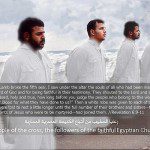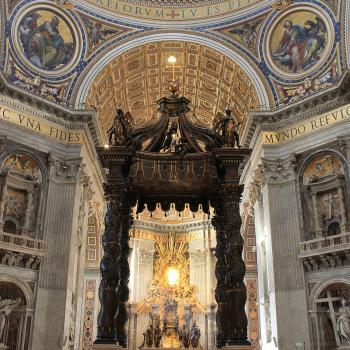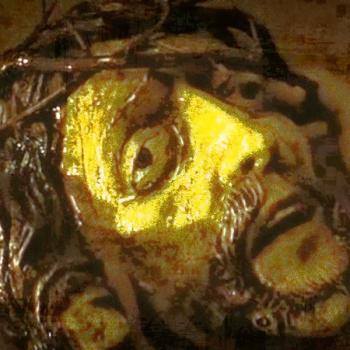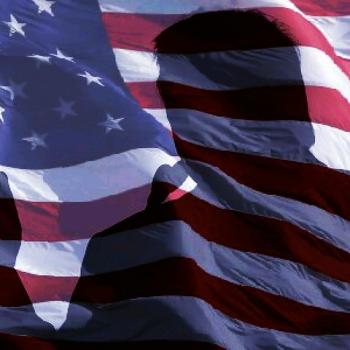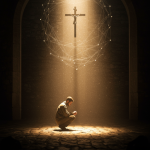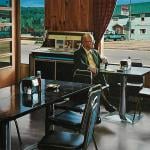
Oklahoma City’s Archbishop Emeritus Eusebius Beltran was a gift to our state when he led us.
He was always willing to take the hard step up to the plate to defend the human person from the ravages of discrimination and hate.
About 10 years ago, Oklahoma passed an outrageous law aimed at Hispanics. This law made it a crime to help people, even when they were in dire situations, who had entered this country illegally. It was so draconian that it cut right across the mission of every Christian to serve and love the “least of these.” It was, in truth and in fact, a Jim Crow law for Hispanics.
I actually debated this point when I spoke against this law. I dug out the vote on the original Jim Crow law that Oklahoma had passed not long after statehood.
Do you want your name on a list like this, I asked my fellow legislators, pointing to the votes. It did no good. The state Republicans had whipped the public into a mindless and vicious anti-Hispanic hatred in order to win elections, and even legislators who saw that this law was a crime against God voted for it for fear of losing their next election.
My own district, which was a mix of all sorts of people — a true “rainbow” district of skin colors — was in a welter over it. Later, when the pro abortion people tried to defeat me in an election, they made an attempt to use that stand against this law to defeat me.
I had to take another stand, this time in my district, and tell the people there that I would not vote for something like this, and that if they wanted a racist who attacked people for political gain, then they should not vote for me. I won that election by a huge margin, with the full support of every racial group in the district.
What that meant — and continues to mean — to me is that the people of District 89 are far better people than you will find in much of the rest of our good state. They are some of the best people you will find anywhere.
Archbishop Beltran did not have the luxury of speaking to and for the Catholics of a small part of Oklahoma, like my House district. He wasn’t dealing with people who had known him all his life. He had to deal with the irascible and diverse Catholic population of his archdiocese. Many of the Catholics were just as thoroughly whipped up into anti-Hispanic hatred as the rest of the state.
So, when their Archbishop came out against this law with the full force of his prophetic and moral voice as their religious leader, they were irate with him for doing so. He did not let that stop him at all. The Catholic Church in Oklahoma stood tall against this dastardly legislation, just as it had stood for life and human dignity in an absolutely reliable way for years.
The Church was not able to stop passage of the law, but the Church, by taking this stand, raised the issue of the moral responsibility of lawmakers in an arena which was operating by a faux morality that justified harming other people. The Catholic Church was alone in taking a stand against this law. Others joined later, but in the beginning, the only voice against it was the Catholic Church.
The priests who were on the priest council here in Oklahoma all signed a declaration saying that they would not obey this unjust law. The statement declared that they would minister to everyone, regardless of ethnicity or legal status, even if doing so meant that they would go to jail.
These men made me proud to be Catholic. More than that, they made me feel that the Church was a refuge for those who were without other refuge, that Christ really did animate what they were doing as His priests. They sent the message with that statement that the Church was for real.
That taught me a simple lesson that I’ve seen enacted again and again around the world. When people are totally abandoned by everyone; when they become the object of such universal hatred that anyone who stands up for them is taking a big risk, the Church is their refuge.
That is what happened to black people during the long dark night of segregation. The black churches not only created community, they ennobled a people. Their message of Christ saved black Americans from falling absolutely into the pit of rageful despair which would have destroyed them in an absolute way that Jim Crow could not.
Archbishop Beltran was a young priest in Atlanta at the time of the Civil Rights Movement. He knew Martin Luther King, Jr. Father Beltran did in that time what Archbishop Betran did later. He stood with the weak and the hated against the powerful haters who wanted to destroy them. Archbishop Beltran marched with Martin Luther King when it was a dangerous thing to do. He marched with his bishop’s permission, but with the understanding that if he was arrested, his bishop would not try to get him out of jail.
This was a time when jail was a witness to truth. Father Beltran marched with the understanding that he might have to be just such a witness.
Among the many wonderful things that Archbishop Beltran did, he wrote a pastoral letter about violence against women. I treasure this deeply. The Church needs to use its moral and prophetic voice to speak out more decisively against violence against women. It could make such a difference if it did.
The Sooner Catholic recently published an article, discussing Archbishop Emeritus Beltran’s experiences in the Civil Rights movement. Here is a brief excerpt.
From the Sooner Catholic:
On a steamy Georgia morning in March 1965, Father Eusebius Beltran and three of his brother priests piled into the four-door sedan they borrowed from the Archdiocese of Atlanta and headed south toward Selma, Ala.
It had been two days since they’d heard news of a police shooting and beatings during a protest march in Selma that would later become known as “Bloody Sunday.”
The men were not strangers to marches during the Civil Rights Movement, having marched many times through the streets of Atlanta to protest discrimination by schools, restaurants, bus stations and other public venues. But, they hadn’t marched in a protest like this. The Selma marches became a national spark to protest the ongoing exclusion of African-American voters from the electoral process and from the discrimination they faced.
At the urging of Dr. Martin Luther King Jr., who they’d spoken with often at his father’s Baptist church, the Catholic priests sought approval from Archbishop Hallinan for the road trip to Selma and use of the archdiocese’s car.
“He told me that he wanted to see the boys, the priests, who were going with me before we left,” said Archbishop Beltran, who is now Archbishop Emeritus of the Archdiocese of Oklahoma City.
“The four of us went to see Archbishop Hallinan in the hospital and that’s when he asked us ‘Do you guys know what you’re doing? Do you realize you’re breaking the law? Do you know that you could go to jail? And, that if you go to jail, I want to let you know I will not bail you out because part of standing for the truth is you take the punishment, and that’s part of the punishment.’ We said we all knew that, and he said ‘OK, God bless you.’”
After a nervous 4-hour drive to Selma, the priests each claimed a mattress on the floor of a hallway at the Catholic church and headed to join the crowds at a pre-march pep rally.
“The whole thing was well-organized and there was always a spokesman up there who was giving directions, reminding people no violence and to be ready to take a beating. It was scary in a way, but when you’re young, you don’t think about it. And, it had to be done too. It was part of the movement at that time. Selma brought together everything we were working toward.”
The next day, the march began in the same way it had two days earlier. Dr. King led the way across the Edmund Pettus Bridge where the group of more than 2,500 marchers were met by state troopers. Since a judge had issued a court order prohibiting the marchers from continuing to Montgomery, Ala., they turned around and marched back to the church without incident. (Later that evening, three white pastors were attacked by members of the Klu Klux Klan, killing one Universalist pastor after the public hospital refused treatment.)
Following the second march, which became known as “Turnaround Tuesday,” Father Beltran and his crew returned to Atlanta where they continued their meetings and marches for several years – including a march to protest a segregated chicken restaurant owned by Lester Maddox, who later became Georgia’s governor.



